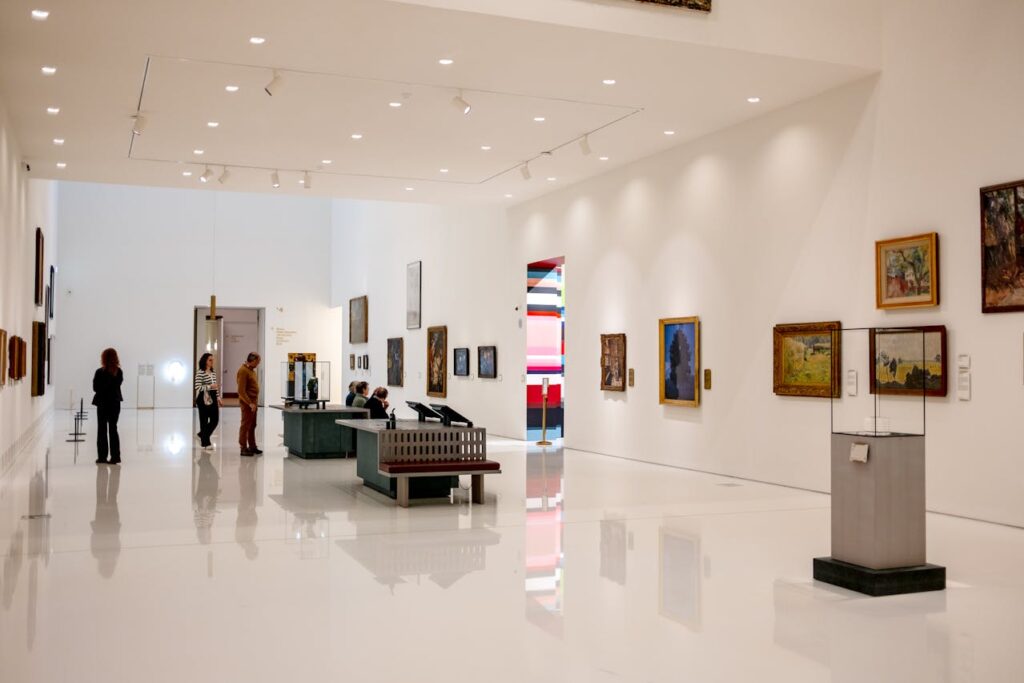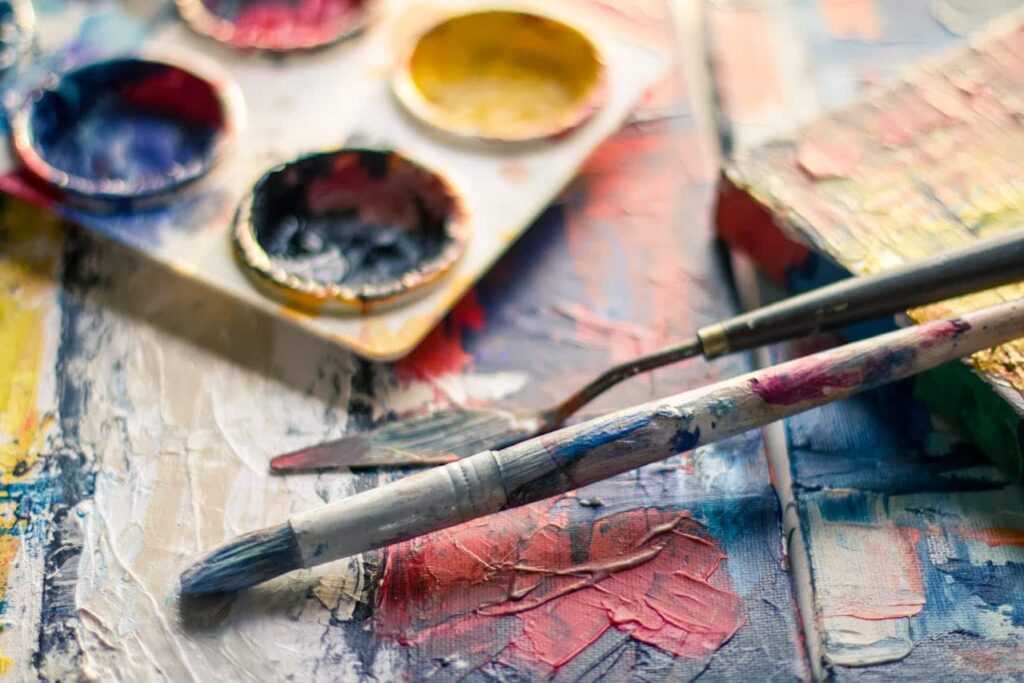You’ve come to the right place if you want to know how to write a Visual Arts Extended Essay. I know exactly what this type of essay needs and what mistakes to avoid. Writing your IB Visual Arts EE doesn’t have to be hard. For a paper that really shows how much you understand and appreciate art, you need to have a good grasp of visual analysis, the right topic, and a clear research framework.
What Is a Visual Arts Extended Essay?
The Visual Arts Extended Essay is a 4,000-word research project you write on your own about a topic in the arts. Your essay should focus mainly on artistic and visual material, not politics, history, or personal thoughts, because it falls under Group 6 of the IB subject groups.
The topics for this IB subject can be as broad as a movement like surrealism or as narrow as a single work by a modern artist. As long as you keep the primary focus on visual analysis, it can include painting, sculpture, installation, photography, graphic design, pottery, building, digital art, performance, and more.
Why Visual Arts Extended Essay Is Different?
The IB says this EE needs to show a mix of personal involvement, individual study, and formal research. The Visual Arts Extended Essay differs from the History, Literature, or Economics EEs because it asks you to make a case using visual proof. Not only do you write about art, but you also think like an art critic or a curator. This means that you shouldn’t be using facts or stories but instead should be interpreting and analyzing.
In particular, these things make it stand out:
- Focus on the visual. You need to look at works of art and think about things like color, shape, texture, style, and design that are visible.
- Use of images. You should use high-quality pictures as proof in your essay like a science EE might use data charts.
- Personal thought. IB values your personal involvement with the art. Unlike in a science EE, where neutrality is expected, your opinions and comments are welcome here. Just make sure they are based on proof.
- Contextual depth. You should look into the artist’s goals, cultural background, and artistic inspirations, but you shouldn’t stop there. You need to talk about how these parts affect how the viewer experiences the work.
- Less text-based research. You should still use academic sources, but your best points should come from first-hand accounts or direct visual analysis. Not just what reviewers have said.
When it comes to Visual Arts EEs, I think the best ones read like well-thought-out reviews that mix academic research with sharp, original analysis.

What Makes a Good Visual Arts EE Topic?
The next step is to choose a topic that will keep your essay going until it’s 4,000 words long without losing focus or momentum. I believe that the best topics for a Visual Arts Extended Essay are narrow, specific, and, most importantly, related to something you care about. If you’re not interested in or affected by what you’re studying, it will show in your writing, which could affect your grade.
You don’t have to choose the most “impressive” or unusual subject. How you go about it is more important. A good topic for critical thought and visual perception lets you do both.
As an example:
✔️ “Yayoi Kusama’s use of repetition and color to express psychological trauma and personal identity.”
❌ “The life and work of Yayoi Kusama.”
Why is the first one better for your Visual Arts Extended Essay? Because it makes you think—you’ll have to analyze the artist’s visual choices, figure out how the artist’s message and method fit together, and maybe even compare different art pieces. The second topic is more or less a review. However, an IB-style review or study will not be a recap, even though it is easier to write.
Visual Arts EE Research Question vs. Topic
From what I’ve seen, this is where many students go wrong. Remember: a topic is the big picture, and a research question is what you’re trying to find out. Below is a perfect example:
✔️ What main ideas run through Yayoi Kusama’s life and work?
❌ How does Yayoi Kusama use color and pattern in her art to show psychological pain and her sense of self?
Do you see the difference? Also, make sure that you can get visual proof to answer your question. That’s what a good IB Visual Arts EE is built on. It’s probably not the right question if your research doesn’t require you to look closely at how something looks, feels, and is put together visually.
What Primary and Secondary Sources Can You Use in Visual Arts EE?
From what I’ve seen, students don’t realize how important this part is to writing a good Visual Arts Extended Essay. When writing, you don’t want to write yourself into a corner because you didn’t get enough visual or environmental proof at the start.
I always tell my students that if they want to write a great Visual Arts Extended Essay, they shouldn’t just read and pay attention. Your eyes are just as important as your mind in a Visual Arts EE. Because visual analysis is your primary tool, you should use first-hand sources as much as possible. Some primary sources are:
- The original works of art, either in person or as high-resolution copies.
- This could be an artist’s sketchbook or other early work.
- First-hand experiences in art galleries and museums.
- Catalogs for art shows.
- Interviews with the organizers or the artist (if possible).
These are the most useful things you have because they let you react directly to the art, not through someone else’s opinion.
Second-hand sources, on the other hand, explain things better. Some of these might be:
- The artist or trend is written about in academic books or magazine papers.
- Texts on art history and theory.
- Critical essays and reviews of art shows.
- Biographies of artists.
- Documentaries or reputable online news sources.
These sources should help you understand things better, but don’t let them think for you. From what I’ve seen, students do better when they do their own visual analysis and use secondary sources to support it.
Don’t forget that IB likes human interaction, so say something about it if you’ve seen a work in person. If you had a unique reaction to a piece or could see how it related to your art, please share that information. Make sure it still has something to do with your research question.
Word Count Distribution and Formatting for Visual Arts Extended Essay
Remember that the Visual Arts Extended Essay can only have 4,000 words, not including the title, references, subtitles, or notes. Each part of your essay should have a goal, and the whole thing should be clear, critical, and well-paced.
This is a general description that I tell my students to use:
- 300–400 words for the introduction. Start by talking about your topic. Then, write out your research question and quickly describe your line of study.
- The body part is between 2,800–3,200 words. This is where you’ll do your visual study. If you need to, divide it into pieces that each deal with a different part of your point, such as method, structure, context, or comparison.
- 400–600 words for the conclusion. Recheck the research question and make a list of your most important results. Please do not add any new points here.
This breakdown gives you enough freedom while still keeping your essay organized and easy to understand. I always tell my students that it’s better to have a tight 3,800-word essay than one that’s too long and full of filler words.
Ensure your formatting is clear and consistent while writing your Visual Arts Extended Essay. I always stress a neat, professional appearance to my students. Make the content simple to read by using a basic, legible font such as 12-point Times New Roman and setting your line spacing to 1.5 or double-spaced. The standard margin size is one inch (2.54 cm) on both sides and should be left as the default.
All images should be clearly labeled with figure numbers and descriptions so the examiner can quickly find them as part of your study. Keep your citation style constant all through the essay.
Don’t let the stress of the IB curriculum hold you back.
Are you struggling to come up with topic suggestions for your IB Extended Essay? Or do you need help with Internal Assessment?
Our experienced writers can help you choose the perfect topic and assist you with any assignment.
You can buy an Extended Essay tailored to your specific subject and requirements.
Our experienced IB writers are always ready to help.

Conclusion
There’s more to writing a Visual Arts Extended Essay than just getting the words in. It gives you a chance to find your style, think critically, and really connect with art.
Remember this if you want to write a Visual Arts Extended Essay that stands out: keep your research question clear, trust your visual instincts, and don’t fear looking at things others might miss. From what I’ve seen, those are the essays that IB examiners remember. You can do this. Good luck!
Also, if you need help with your Visual Arts Extended essay, feel free to get in touch with our IB writers.
FAQs
Yes, you can focus on a contemporary artist as long as their work offers enough visual material for analysis in your Extended Essay.
It’s helpful, but not essential. High-quality digital reproductions and virtual exhibitions are valid sources, too.
Use enough to support your points, but avoid overloading the essay. Generally, 5–10 well-chosen images are plenty.
Focus on how visual elements create meaning. Use art-specific language, and link every point back to your research question.

